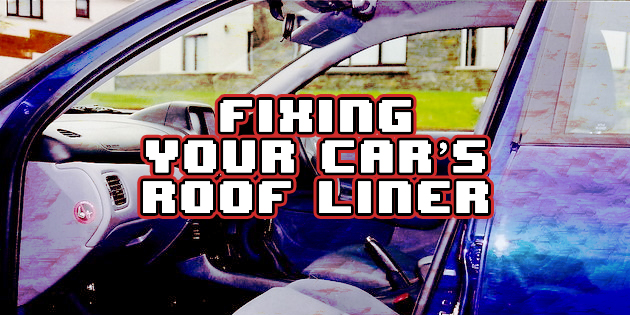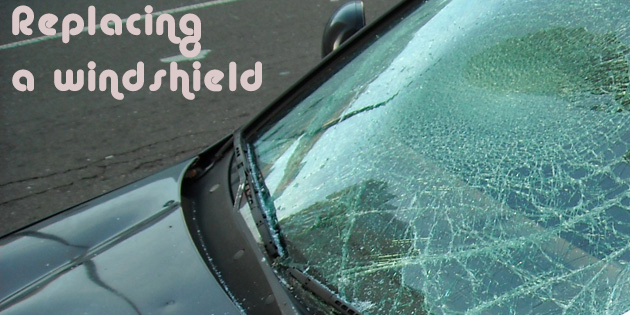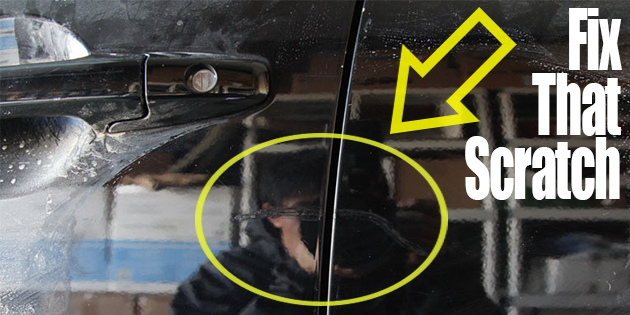There are any number of reasons why you may want to replace the roof liner in your car, but the most reason is that the fabric had become detached from the backing board.
This is not only unsightly- it could also cause a safety issue when the sagging fabric obscures the driver’s visibility.
Whatever the reason for wanting to replace a roof liner, whether giving your car an upgrade, or simply restoring the looks of your car, be aware that the procedure can be tricky, and that you need at least one assistant.
Having said that, you need to decide if you want a fabric liner, or a more durable faux leather liner that will likely outlast your car. In this step-by-step guide, we will explain the procedures to fit either a fabric, or a faux leather roof liner. Here is how to do it…
Things you need to repair your roof liner
- New foam-backed fabric in the desired color
- Faux leather (Optional, but it makes an excellent alternative to fabric)
- Liquid contact adhesive (For use with faux leather)
- Spray-on upholstery adhesive (for use with foam-backed fabric)
- Phillips and flat-bladed screwdrivers
- Trim removal tool
- Small paint brush to apply liquid adhesive
- Assistant ( Two assistants is recommended, but one will do)
- Hard-bristled brush, or 500-grit sand paper (To remove old foam from liner backing board)
- Lint-free cloth
- Utility knife with new blades, or a scalpel to ensure hassle-free trimming
- Pair of scissors
- Large, flat surface, such as two tables pushed together to form one large table
- Pile of old magazines to weigh down the new liner until the adhesive cures
NOTE: Liquid contact adhesive must not be used with foam-backed fabric, since it will dissolve the foam backing. Similarly, do not use spray-on adhesive with faux leather, since it does not provide a strong enough bond to support the weight of faux leather.
How to remove the old liner
Step 1
How roof liners are fitted varies greatly between vehicles, but in general, all roof liners are secured by various trim panels, the securing screws of the dome light and sun visors, and sometimes by the clamping action of grab handles that are bolted to the roof. Press-in clips are rare on new cars, but they are still used in a few cases.
So before you start the process of removal, take a few minutes to familiarize yourself with the bits and pieces that may be securing the roof liner. Once you are confident you know how everything fits together, start by prying out the dome light, and disconnecting the wiring. Remove the screws securing the light, and place the dome light aside, but out of harm’s way.
Next, look for , and remove all screws securing the grab handles, rear view mirror, and sun visors. Remove all items from the car; placing them in the trunk is a good way to keep everything together.
Step 2
Next, use the trim removal tool to pry lose all the trim panels that are in contact with the roof liner, and place them aside.
NOTE: While most interior trim panels merely clip into place, some narrow panels like the panel at the top edge of the windshield are sometimes provided with a metal reinforcing strip. Take great care when removing these panels so as not to bend them, because straightening them is almost impossible without leaving buckles, or other damage.
Step 3
At this point, the liner should be detached from the surrounding body work, but removing it from the car might be problematic in a sedan. To make things easier, you may have to recline all the seats, and if you have collapsible rear seats, you may have to lay them completely flat to give you enough room to manoeuvre the roof liner out of the car through a rear door with the help of your assistants.
WARNING: It is very important not to rush this step. Use an assistant, and if you have two assistants, use both to prevent breaking or creasing the roof liner backing board in the removal process. Breaking the soft, and often brittle backing board is easier to do than you might think, but worse, there is no reliable way to repair it. If it breaks, it must be replaced, so take your time to remove the board form the car in one piece.
Step 4
Place the roof liner backing board on your previously prepared table, but be sure to perform the following steps in a shaded, but well-ventilated area to avoid excessive inhalation of the toxic fumes given off by the adhesive.
How to prepare the roof liner backing board
Step 1
Remove the old liner fabric from the backing board, but take care not to use excessive force on patches that may be still be stuck down. Apply an even, but gentle pressure to prevent ripping pieces out of the backing board, especially round the edges, or holes.
Step 2
Next, use the stiff-bristled brush, or sand paper to remove all the old foam from the board. It is very important to make sure that ALL the old foam is removed, since any that remains behind will interfere with the adhesive bond between the board and the new liner material.
It s not necessary to remove the stickiness from the board. The sticky layer is the residue from the original adhesive, and retaining it helps with forming a bond with the new adhesive. With all the old foam removed, use the lint-free cloth to remove all dust and foam particles to ensure the best possible bonding surface.
Step 3
Once you are certain that the backing board is clean, lay the new material over it, but use some of the magazines you have at hand inside the shape to ensure that there is full contact between the new lining material and the board. Doing this also helps holding the material in place while you perform the next step.
Step 4
Use the scissors to cut the material around the edges of the board. However, do not try to match the cut to the exact size and shape of the board at this point. Your assistants will need some material to hold onto when you glue the new material down, so cut the material in such a way that you have about 2 inches spare all around the edge of the board.
NOTE: Do not attempt to cut the hole for the dome light and other accessories into the new liner material at this point. Once you have applied the adhesive, it will be impossible to exactly match the holes in the liner material to the holes in the board, and there is a very good chance that the mismatch will ruin your restoration attempt.
How to stick down a faux leather roof liner
Step 1
If you are satisfied that the new faux leather liner is cut to the right size (including the 2-inch overlap), proceed as follows;
NOTE: With faux leather, it is important to remember that both the faux leather and the board must be fully coated with contact adhesive to ensure a professional result. Any spots on either the faux leather or the board that is not covered by a layer of adhesive will cause a bubble to form that is almost always very difficult, if not impossible to remove.
So before you start applying adhesive, check the container to see what coverage you can expect to achieve to ensure you have enough adhesive, but don’t rely on the supplied figure. Both the leather and the board will absorb a fair amount of adhesive, so make sure you have enough adhesive to cover at least double the area the container says you can cover.
Step 2
Use the paint brush to apply a liberal coat of adhesive to the board, making sure that you do not miss any spots. As you proceed, check for spots where the board is absorbing the adhesive, but resist the temptation to apply too much adhesive on these spots.
Allow the spot to dry for a few minutes before applying a second coat to prevent bubbles forming as a result of the thicker coats not curing at the same rate as everywhere else.
Step 3
With the adhesive applied to the board, make sure you have enough room on the table to lay the piece of faux leather flat, but make sure there is no spilled adhesive on the table, since it is impossible to remove cured contact adhesive from the leather later.
As with the board, it is very important to apply the adhesive evenly, and without missing any spots. Apply the adhesive with brush strokes in different directions to ensure complete coverage.
Step 4
DO NOT try to lay the faux leather into the board before the contact adhesive is cured to the point where it does not transfer to a finger when you touch it. Depending on the ambient temperature, this can take anything from five, to twenty minutes, but regardless of how long it takes, it is critically important that the adhesive is dry to the touch before bring the two surfaces into contact.
NOTE: At this stage in the curing process, the bond will be immediate and permanent. If the adhesive is not air-dry the bond will be weak, and in some cases, the materials will not bond at all.
Step 5
If you are satisfied that you have not missed any spots while applying the adhesive, and that the adhesive is sufficiently air-dried, let your assistants hold the entire piece of faux leather over the board, adhesive side down, in such a way that the centre sags toward the board, but without it actually touching the board.
Next, have them lower the leather until the centre part touches the board, at which point you must start pressing down on the contact area. Use a clean, folded lint-free cloth for this, but take some care not to stretch the leather. Use a circular motion to apply a firm pressure only where the leather and the board are in contact. This initial pressure will activate the adhesive on both surfaces to form an immediate, and permanent bond.
Step 6
From this point on, the final result depends on how well you and your assistants work together. The object is to bring the leather into contact with the board in such a way that you can press it down as it is being lowered, working from the centre toward the edges, but without the leather folding, creasing, or forming bubbles over sometimes complex contours.
NOTE: This sounds far more difficult than it really is; all it takes is for both assistants to keep the leather from making contact with the board, but working with you to avoid stretching the leather. If you are all on the same page ( in a manner of speaking), your assistants will lower the leather at the same rate at which you are pressing it down, meaning that you can work the leather into sometimes tight corners and contours without bubbles or creases forming.
If you get it right, you end up with a roof liner that will look as if it was sprayed onto the backing board, which is the result you are looking to achieve, so don’t rush this step.
Step 6
At this point, you should ideally not disturb the new liner for at least a couple of hours to allow the adhesive to cure, but to help the process along, you can lay some magazines in the board to keep up the pressure. Magazines are very flexible and pliant, meaning they easily fit into contours and over bumps, so the more magazines you can pile in, the better.
Step 7
After a couple of hours of curing time, you can use the utility knife or scalpel to trim off the excess leather around the edges of the board as well as cut out any holes, such as the hole for the dome light(s).
At this point, you should have a perfect roof liner, and you can reinstall the backing board in the exact reverse order of removal.

How to stick down a foam-backed fabric roof liner
The steps required to fit a foam-backed fabric liner are much the same as for a faux leather liner, but there are some differences you need to know about, so here is how to fit a fabric liner.
Step 1
With foam-backed fabrics, you generally do not have to apply adhesive to both the board and the foam side of the fabric. However, you need to apply the adhesive evenly to achieve a good result.
NOTE: Do not cut holes into the fabric at this point. As with faux leather, it will be almost impossible to match pre-cut holes with existing holes in the board. Also make sure to cut the fabric at least two inches bigger than the board to allow for easy handling.
Step 2
It is almost always easier to spray the adhesive onto the previously cleaned and prepared board, than onto the fabric. Spray the adhesive in several directions to achieve the best possible coverage, and pay particular attention to the insides of acute or complex contours to ensure full coverage.
Step 3
With spray-on adhesives you need to work fast, so be prepared to lay the fabric onto board immediately you are done applying the adhesive. However, to avoid creases, you need to work from the middle outwards, so have your assistants lower the fabric in such a way that the first contact is made in the middle of the board.
Apply a light pressure at this point, but use a cloth placed inside a clear plastic bag, because a plastic bag slides over the fabric far easier than a cloth does. This is important since excessive pressure or drag can cause the fabric to separate from the underlying foam layer, something that is guaranteed to ruin your efforts.
Step 4.
Keep on working the fabric onto the board, but take extreme care not to allow the fabric to crease or fold. Have your assistants maintain a steady tension on the fabric while lowering it onto the board, but not so much tension that the fabric stretches or separates from the foam that is already stuck down.
Step 5
Continue the process of sticking the fabric down, but don’t spend too much time working an area, since the adhesive may get to dry to form a bond in other areas. If this happens, you can re-apply some adhesive, but now you run the risk of getting adhesive on the “right” side of the fabric, so be careful when you re-apply adhesive.
WARNING: Resist the temptation to pull on the fabric to see if it is stuck down properly. Doing this will almost certainly separate the fabric from the foam backing.
Step 6
If you are certain the fabric is stuck down properly, and that there aren’t any bubbles, folds, or creases, allow the adhesive to cure for the amount of time stated on the container before trimming the excess around the edges, and cutting the holes for the dome light(s) and other accessories.
Step 7
If everything went well, your new roof liner should look like it did when the car was new, and with the help of your assistants, you can now reinstall the liner in the exact reverse order of removal.
I hope you learned some valuable lessons in roof liner repair!
Thanks for reading! Please share this article on social media if you found it helpful.
Leave a comment down below if you have any questions about this repair.





1 Comment
Very Good advise thank you unfortunately my new lining arrived wrapped in plastic and has creases and fold creases can these be removed.